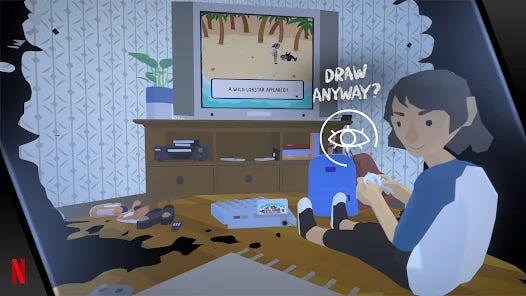How we play and why it matters
How much does the input method affect the game design and how can the controller affect the players themselves? And why blinking might be a good way of controlling the game.
Thomas Mahler, CEO of Moon Studios known from Ori games, recently posted on Twitter about what he expects from new consoles and the first point was new controllers. He cites the example of the Nintendo 64, which, by introducing an analog stick, made it possible to move in 3D games in a whole new way. In his opinion, console makers have rested on their laurels by focusing only on not welding together what already works. Innovation in controllers could bring fresh ideas to game design, or even create completely new genres.
Is he right?
Some gaming devices are defined by how one interacts with them—for example, Nintendo Wii, followed by Kinect from Xbox and PlayStation Move. The popularity of the Wii was huge, and most games for it were unique and incomparable to anything else, thanks to its motion controllers. But this revolution didn't quite catch on in the long term - at least in the traditional console market. It could be said that VR is the continuation of these traditions in this regard, also allowing you to make strange moves in your living room, to the amusement (or annoyance) of other household members.
Mahler suggests going the VR route and adding similar controllers to traditional consoles. The so-called 6DOF (6 degrees of freedom) controllers allow movement in more directions than a regular controller. Such controllers are included with Oculus Quest or Valve Index - we can wave them in all directions of space, rotate, and move them almost like our own hands. However, this does not mean you have to give up the existing buttons - they are still on the controller, just like triggers and analog sticks.
The new controller could make both existing game genres work better on consoles - especially FPS, in which the lack of precision of the mouse is compensated by auto-aim on the gamepads.
However, something else is the most interesting for me. It’s noticing how much the input method affects the game design and how the controller can affect the players themselves.
You could see how much a device can influence game design by observing changes in the shooter genre after 2006 when Gears of War premiered. It was created by Epic Games, a studio known for the Unreal series, a hardcore PC game full of fast action requiring high precision. But when they created an exclusive production for the Xbox console, their shooter game was adapted to the weak side of gamepads: in Gears of War, the most important thing is to hide behind cover, which means that we do not have to shoot while moving. This makes aiming on the pad easier, reducing frustration and shifting the game's focus from quick reactions to a more tactical attitude.
Do you want to know how much the addition of a new input option impacts game ideas? Look at Playdate - a small portable console with... a crank. Contrary to intuition, it is not used to charge the console but is one of the controllers.
This is enough to make small, black-and-white games a completely different experience than most indie games. In one game, the crank charges the flashlight, in another, it serves as the main controller to unwind the rope on which the thief robbing the residence hangs.
The controller we use to play can influence our feelings about the game. And it isn’t about convenience, or at least, not only.
An example is Diablo, which played on a console brings a quite different experience than when played on a mouse and keyboard. Moving the character directly, using the analog stick, gives a more natural and direct feeling of being a character than ordering them where to move by pointing a cursor. On the other hand, aiming at a large group of enemies or managing your equipment is definitely more convenient when using a mouse. Playing on a gamepad won't work in every case but in the case of, for example, the barbarian class, it can give much greater satisfaction from combat and a sense of identification with the controlled character.

However, what impresses me the most are the games that can influence our emotions by using controls.
The creators of Brothers: A Tale of Two Sons managed to do this. Each stick is responsible for controlling one of the brothers. At first, it seems a strange and unnatural solution (because most games have accustomed us to something different), but over time we understand how powerful a narrative tool is the fact that we take care of two brothers at once.
Warning, now there will be a SPOILER to the ending. BUT if you haven't played Brothers for over 10 years since its release, maybe it's worth reading it instead of fooling yourself that you will play it soon ;)
When one of the brothers dies in the finale, we suddenly feel his absence on a very physical level. Our body has become accustomed to controlling both of them at once, and now one of the knobs remains idle. No other game, or perhaps any other work of culture, has ever made me feel a sense of loss in such a TANGIBLE way as Brothers.
END OF SPOILER
Interestingly, there is a concept in psychology known as embodied cognition, which describes how the physical state of our body affects our mental state. Perhaps in the context of games, they can be extended to how physical exposure to the game affects our emotional state while playing.
Another game that plays on our emotions and body at the same time is Before Your Eyes. In this title, the developers from GoodbyeWorld Games used a camera to track the player's blinks. All this to create a story in which blinking moves the player in time - sometimes a few minutes forward, sometimes years. So we listen to the story with open eyes trying not to miss any of it. And when we blink, we often feel irrevocable regret for what we can no longer experience. Isn't that a great metaphor for life?
This also makes us feel the story on a physical level, and how well we control our body affects how we perceive the plot.
Sometimes we also feel the influence of physicality in games, even if it is not the most important element in the game design.
When running away from enemies with the analog stick pressed, you will feel tired after a long time and are more susceptible to accidentally slipping your finger.
In FIFA the vibrations of the controller become more intense during a match-deciding penalty, trying to stress you out like the controlled player.
Driving off the track in a racing game causes the pad to vibrate uncomfortably and makes the car more difficult to steer.
In Death Stranding a Bridge Baby carried by the player may burst into tears and it can only be calmed down by gently rocking – and the player needs to rock the pad as if it were a real newborn.
New devices and methods of interacting with computers are inspiring and exciting. This is good because this causes technological progress. Dozens of innovations will be forgotten, but one of them might become a new standard.
But what excites me the most are people who can take current constraints and do something within them. Something that no one has ever thought of before. Influencing the player in a way never seen before. It allows me to see that game designers shouldn’t think about input only when they are setting controls and deciding which button does what.
Game designers should be perceived input as a full-fledged gameplay and storytelling tool. What's more - this is the only way we can be sure that the player is moved by our game. Quite literally.
***
That's all for today! If this post was useful and interesting for you, I would be grateful if you would write a comment or share it with someone who may enjoy it as well.
Thanks!
Subscribe to not miss next week post:








